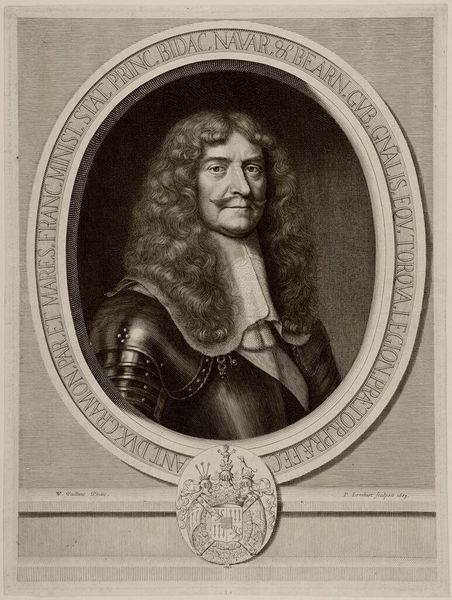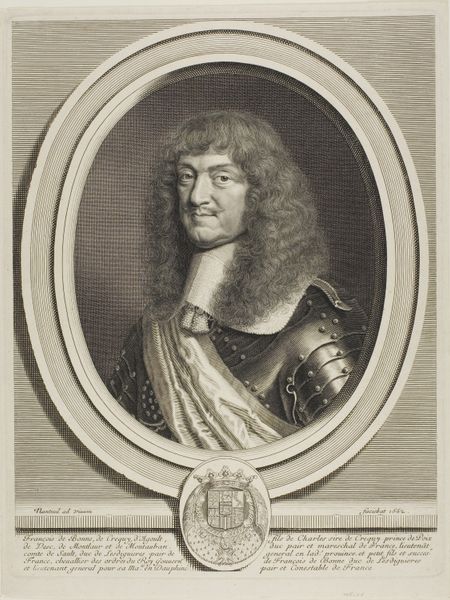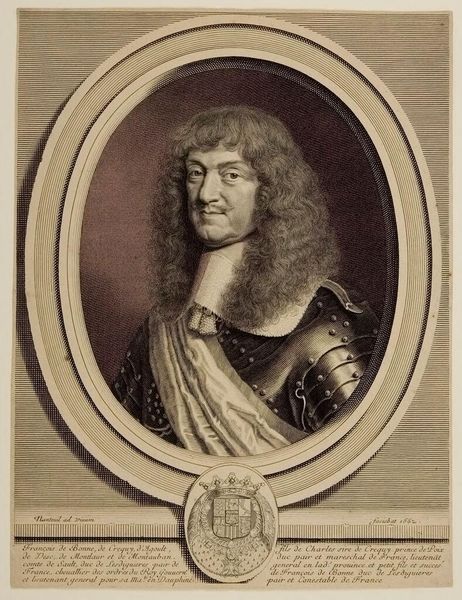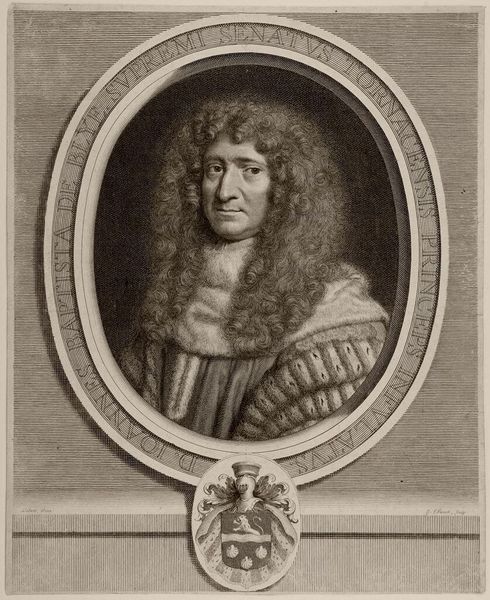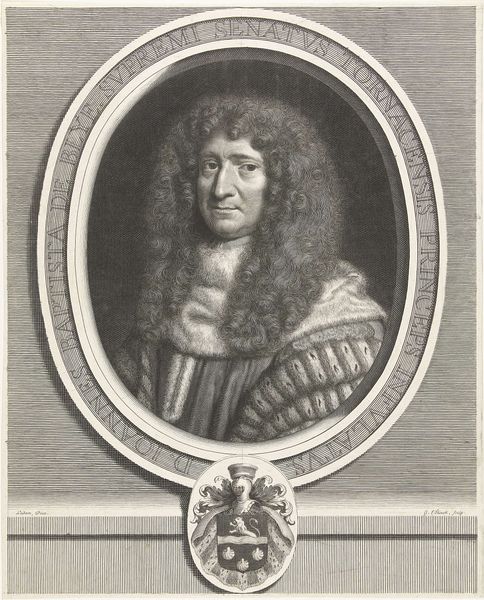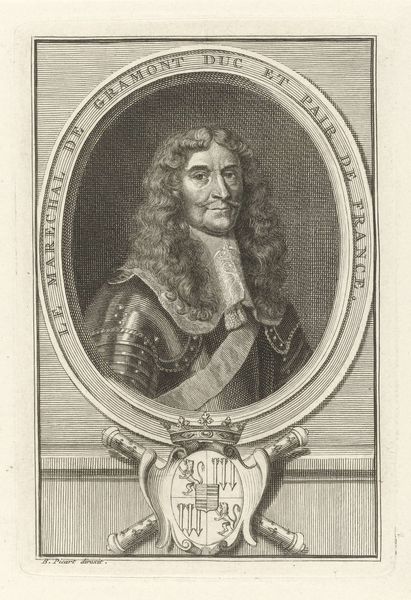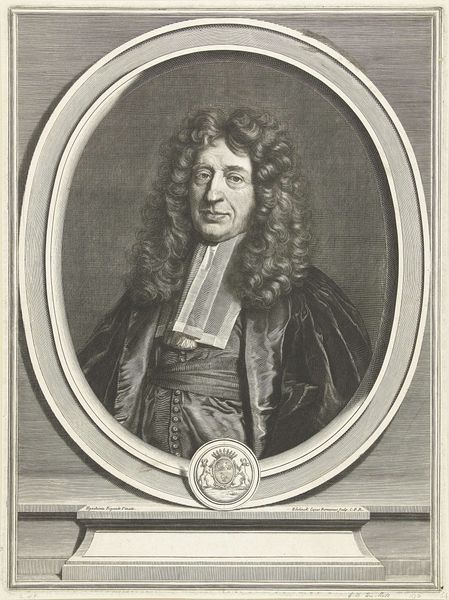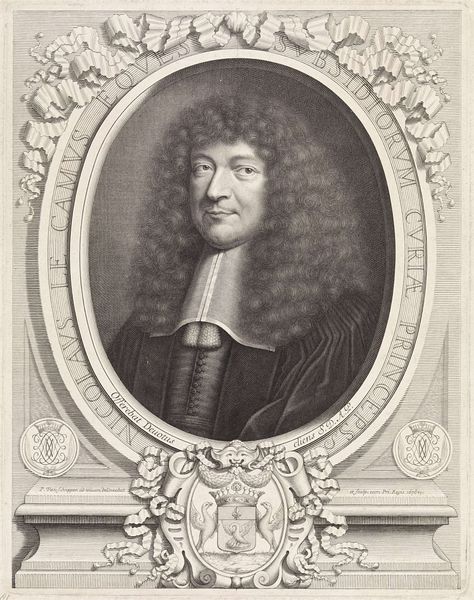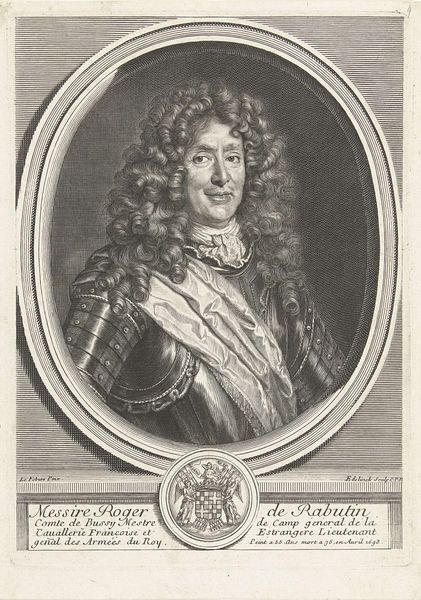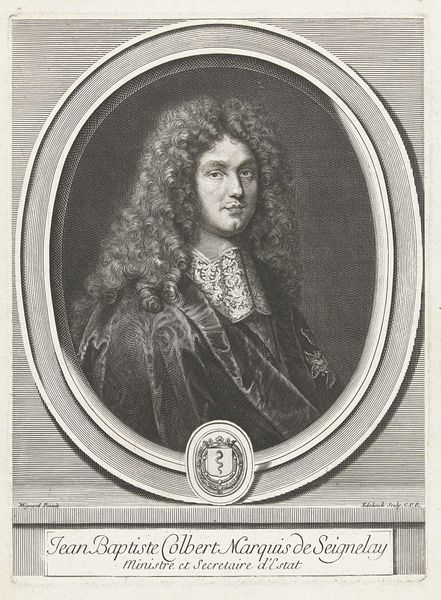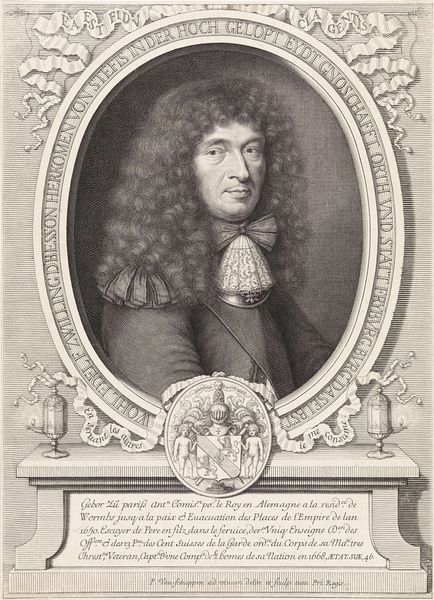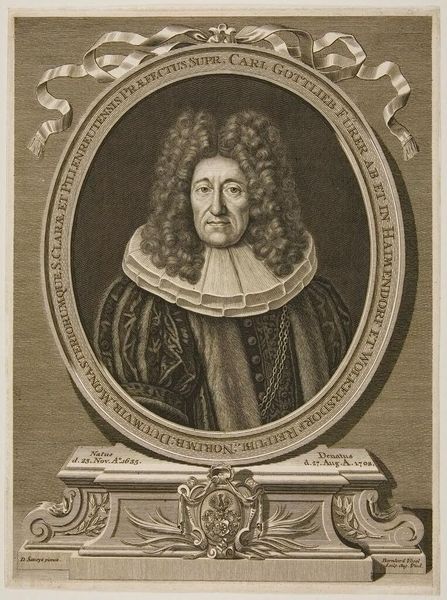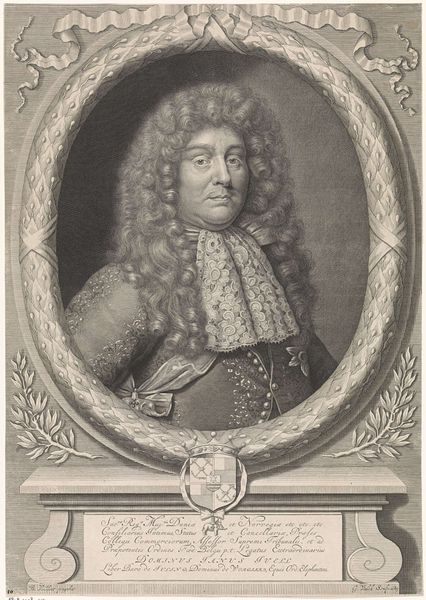
metal, engraving
#
portrait
#
baroque
#
metal
#
old engraving style
#
history-painting
#
engraving
Dimensions: height 247 mm, width 185 mm
Copyright: Rijks Museum: Open Domain
Editor: We are looking at an engraving of Antoine III de Gramont by Gérard Edelinck, made sometime between 1666 and 1707. The detail is astonishing. I'm curious; how do we interpret this portrait in terms of power and representation? Curator: It's important to unpack the visual language here. The subject, a marshal of France, is rendered in a way that reinforces his elite status. His armor, the lace collar, even the meticulously rendered curls all speak to a carefully constructed image of authority. But consider what that authority is built upon. How does this portrayal either uphold or challenge existing hierarchies? Editor: I see your point. The attire and bearing certainly project power. Does the context of French society at the time influence our reading of it? Curator: Absolutely. We're talking about a society deeply structured by class, gender, and inherited privilege. Consider how portraits like these circulated and how they shaped perceptions of figures like Gramont. Were they meant to impress upon those above or quell dissent from below? Do you see elements of propaganda here? Editor: Perhaps the idealized representation could be seen as a form of propaganda, solidifying the power of the aristocracy. Thinking about gender, is there something specifically masculine about this portrait? Curator: Very astute question. His armor signals military strength, but his gaze is more about calculated self-presentation. We have to be conscious of performativity here. What does it mean to perform masculinity, power, and aristocratic identity in this visual landscape? Editor: This makes me think more critically about the ways that portraits aren't just representations but also active agents in shaping social narratives. Curator: Exactly! And how those narratives affect us still today. Editor: I never thought I could think so much about identity looking at just a simple engraving. Thank you!
Comments
No comments
Be the first to comment and join the conversation on the ultimate creative platform.
